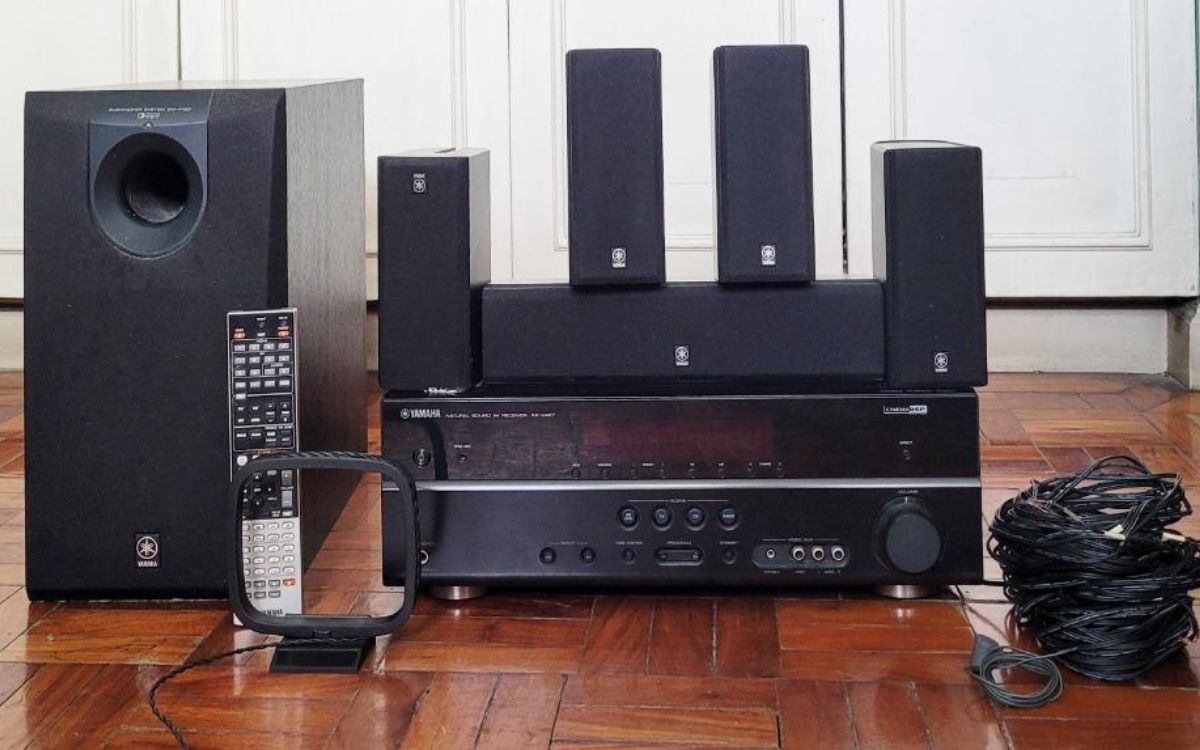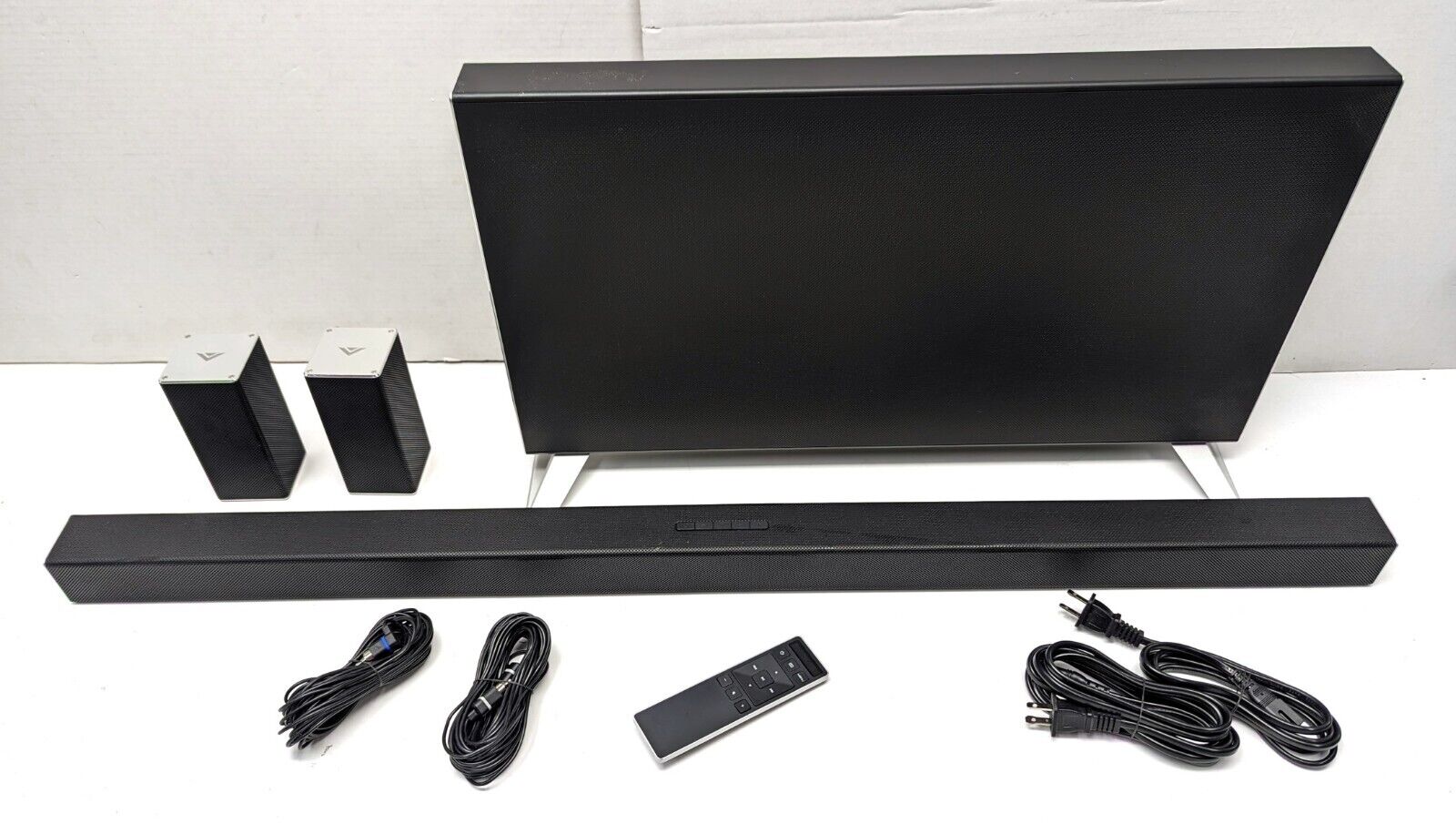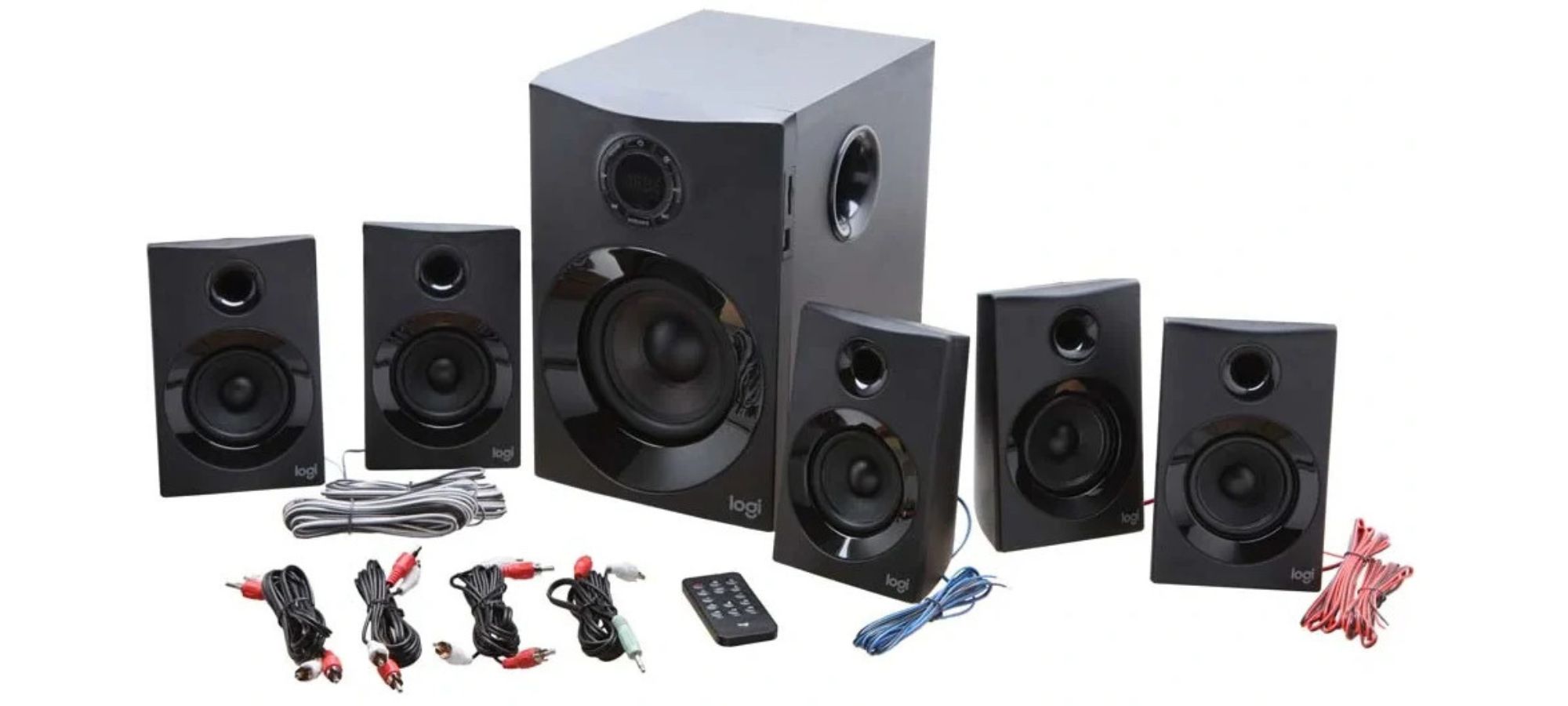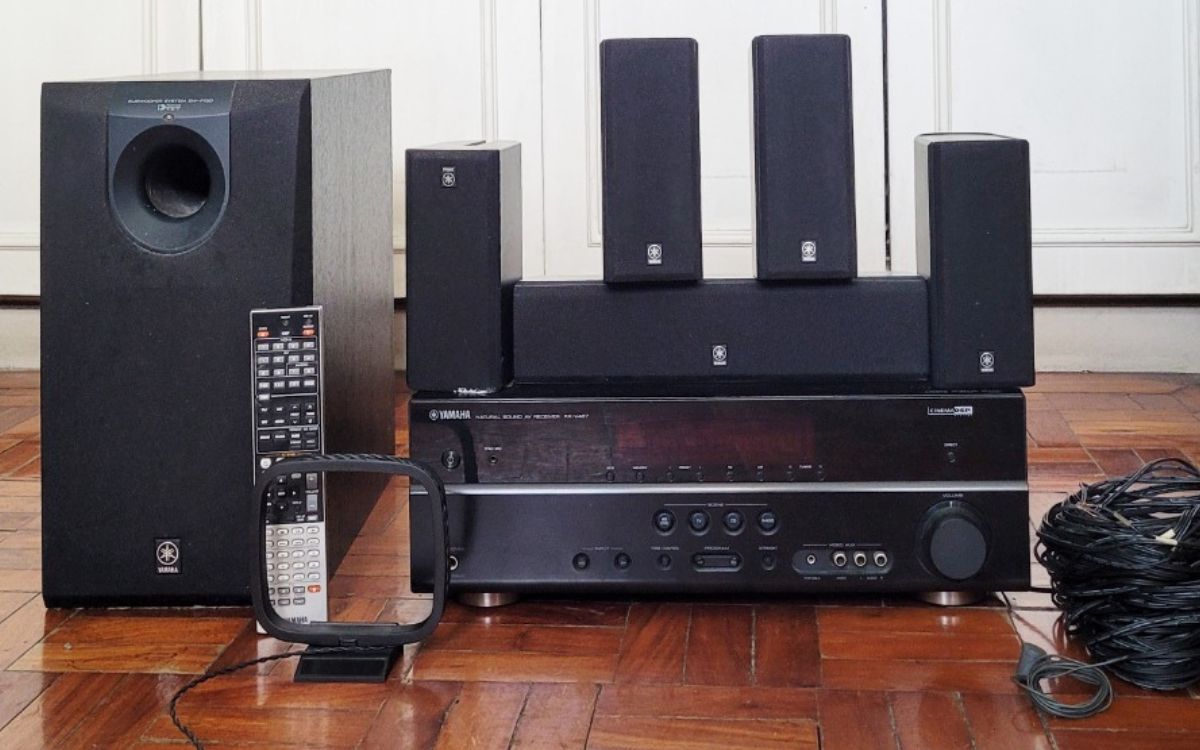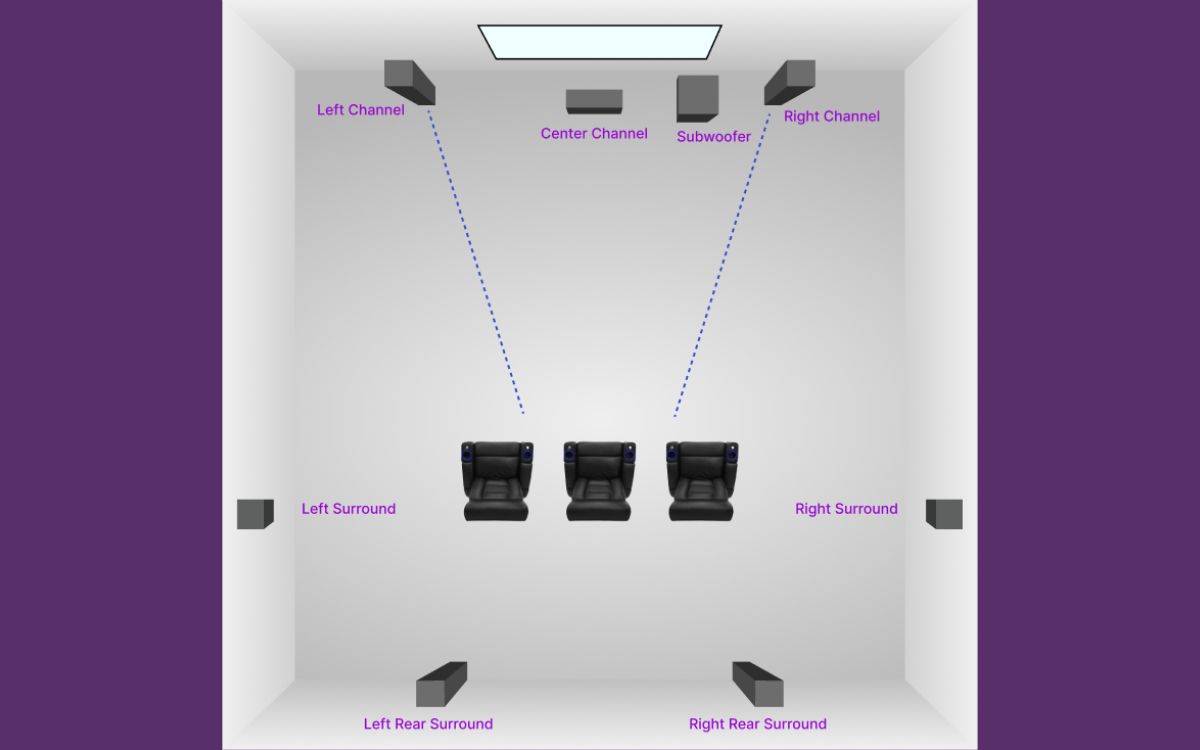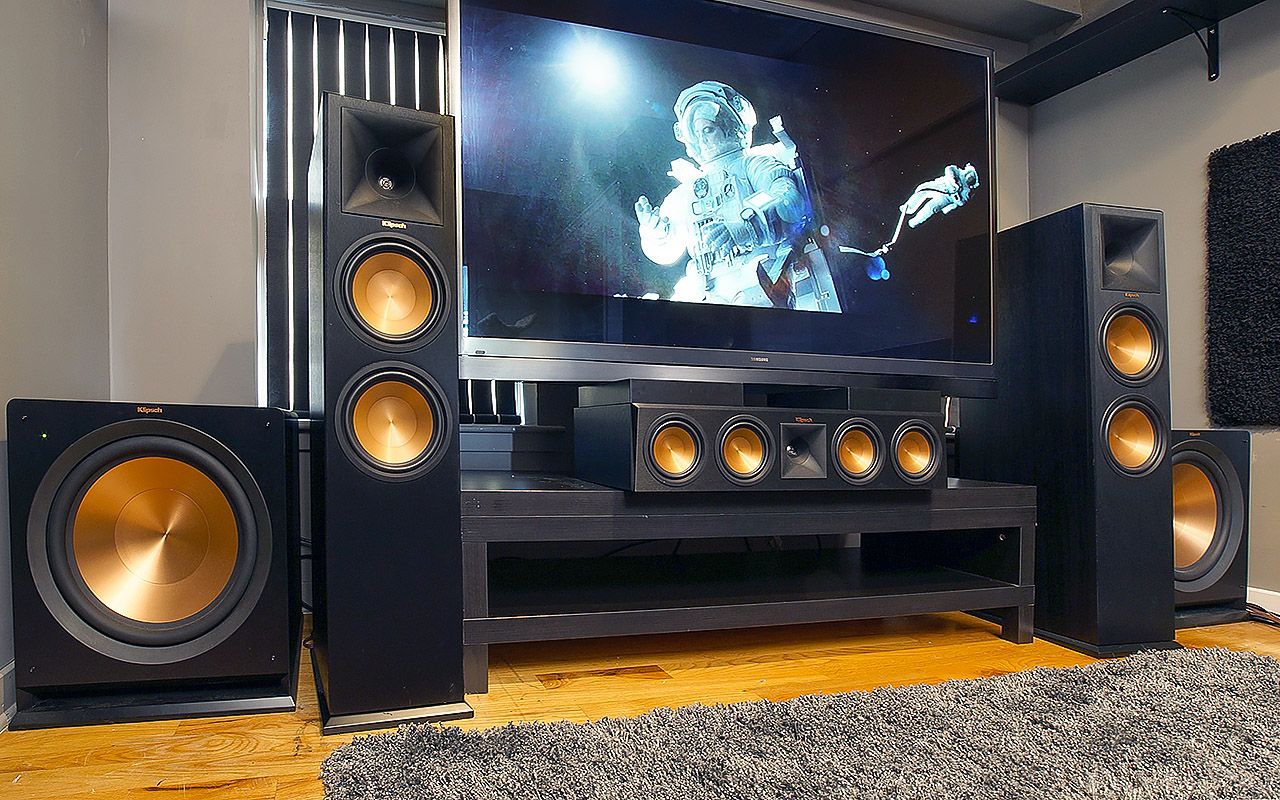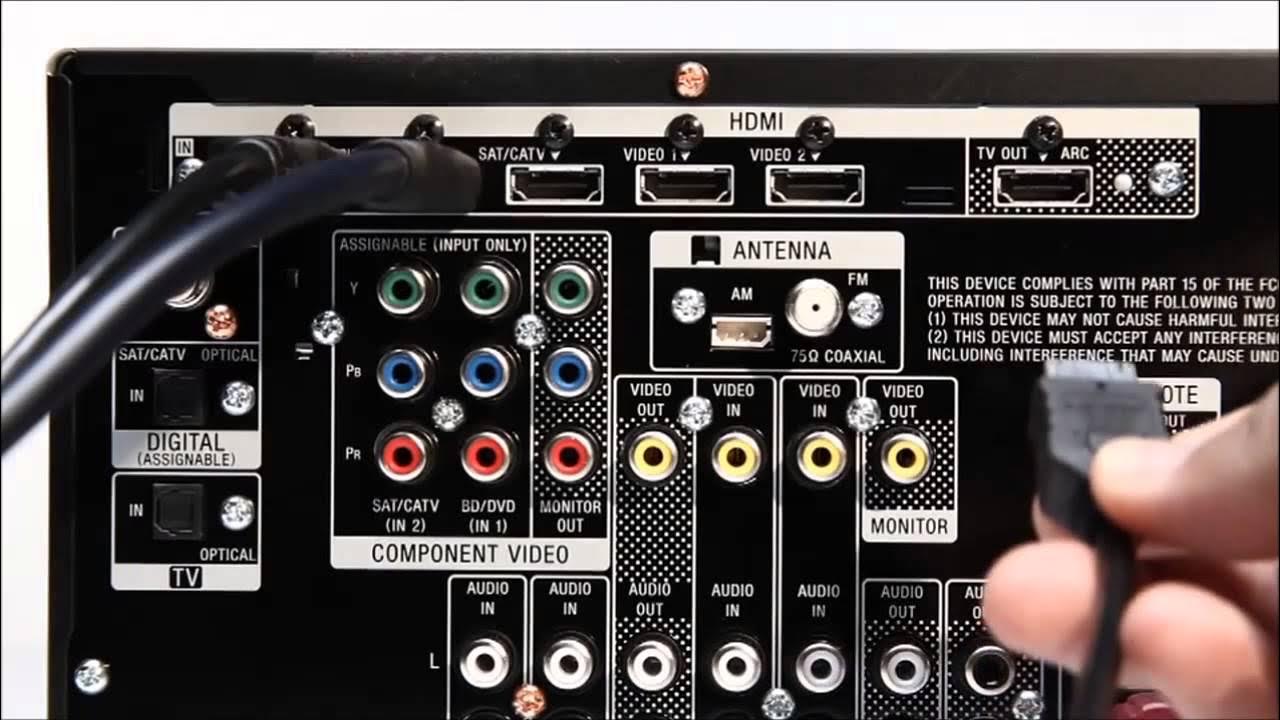Home>Production & Technology>Surround Sound>How Many Watts For Surround Sound System
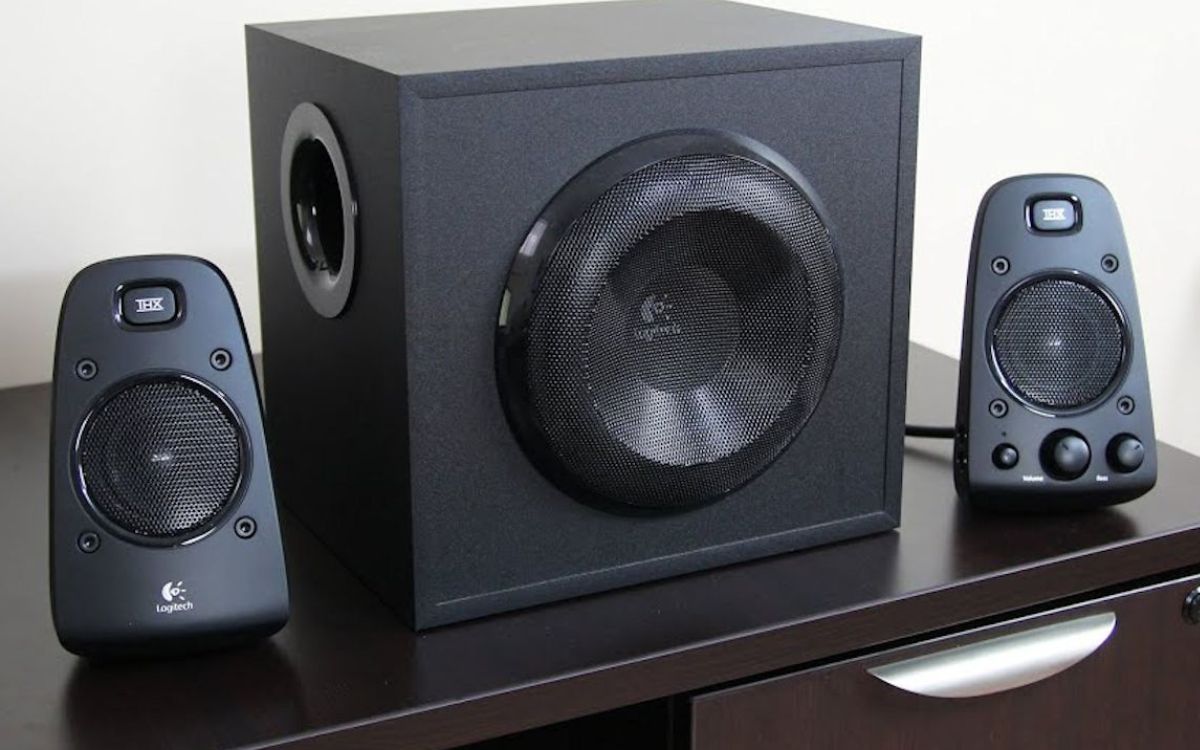

Surround Sound
How Many Watts For Surround Sound System
Published: December 22, 2023
Looking to set up a Surround Sound system? Find out the ideal wattage for an immersive audio experience with our expert guide on how many watts you need.
(Many of the links in this article redirect to a specific reviewed product. Your purchase of these products through affiliate links helps to generate commission for AudioLover.com, at no extra cost. Learn more)
Table of Contents
- Introduction
- Understanding Surround Sound Systems
- Choosing the Right Surround Sound System
- Determining the Ideal Wattage for a Surround Sound System
- Factors Impacting Wattage Requirements
- Recommended Wattage for Different Room Sizes
- Setting Up and Calibrating Your Surround Sound System
- Tips for Maximizing the Performance of Your Surround Sound System
- Conclusion
Introduction
Welcome to the world of surround sound systems, where audio is brought to life in a whole new dimension. Whether you are a movie enthusiast looking for an immersive home theater experience or an audiophile in search of crystal-clear sound quality, a surround sound system can transform your audio experience.
Surround sound systems are designed to replicate the illusion of sound coming from different directions, creating a more realistic and captivating audio environment. With speakers strategically placed around the room, you can feel as if you are right in the middle of the action, whether it’s the booming explosions in an action movie or the subtle whispers in a suspenseful thriller.
But with so many options available in the market, choosing the right surround sound system can be a daunting task. From the number of speakers to the type of audio formats supported, there are several factors to consider in order to make an informed decision.
One important consideration when selecting a surround sound system is the wattage. The wattage of the system determines the power and volume capabilities, impacting the overall audio performance. It is crucial to determine the ideal wattage for your specific needs in order to maximize the system’s potential.
In this article, we will dive into the world of surround sound systems and explore the factors to consider when choosing the right wattage for your setup. We will also provide recommendations for different room sizes and offer tips on setting up and calibrating your surround sound system for optimal performance.
So, read on to discover how many watts you need for your surround sound system and unlock the full potential of your audio experience.
Understanding Surround Sound Systems
Before we delve into the details of wattage requirements, let’s first gain a solid understanding of surround sound systems. At its core, a surround sound system is an audio setup that uses multiple speakers placed strategically around a room to create a more immersive and realistic sound experience.
The most common configuration for a surround sound system is the 5.1 setup. The “5” denotes the five main speakers in the system, while the “1” represents the subwoofer. The five main speakers consist of three front speakers, namely the left, center, and right speakers, and two surround speakers placed behind the listener.
In addition to the 5.1 setup, there are more advanced configurations such as 7.1 and 9.1 setups, which add additional speakers for an even more immersive experience. These additional speakers are often placed at the sides or above the listener, creating a three-dimensional soundstage.
Surround sound systems also support various audio formats, such as Dolby Digital and DTS, which are designed to enhance the audio experience. These formats utilize specialized encoding techniques to deliver multi-channel audio, allowing for precise placement of sound effects and a more realistic audio environment.
By having speakers placed around the room, a surround sound system can reproduce directional sounds, giving the listener a sense of depth and spatial awareness. For example, if there’s a car chase scene in a movie, you’ll hear the sound of the car approaching from behind and moving towards the front as the scene progresses.
It’s important to note that proper speaker placement is crucial for an optimal surround sound experience. Each speaker plays a specific role in delivering different audio channels, and incorrect placement can result in a skewed audio experience or a loss in sound quality. Hence, it’s worth investing time and effort in setting up your surround sound system correctly.
Now that we have a better understanding of surround sound systems, let’s move on to the next section where we’ll explore how to choose the right system for your needs and how wattage plays a role in its performance.
Choosing the Right Surround Sound System
When it comes to choosing the right surround sound system, there are several factors to consider to ensure you find the system that suits your needs and preferences. Here are some key points to keep in mind:
- Room Size: The size of your room plays a significant role in determining the type of surround sound system you should consider. Larger rooms may require more powerful speakers and higher wattage to fill the space adequately, while smaller rooms can benefit from compact systems with lower wattage.
- Budget: As with any audio equipment, surround sound systems come in a range of prices. Set a budget beforehand to help narrow down your options and find a system that offers the best value for your money.
- Speaker Configuration: Decide on the speaker configuration that best suits your preferences and room layout. The most common configuration is the 5.1 setup, but you may opt for a more advanced setup such as 7.1 or 9.1 if you want a more immersive audio experience.
- Audio Formats: Consider the audio formats supported by the surround sound system. Look for systems that offer compatibility with popular formats such as Dolby Digital and DTS, as they provide enhanced audio quality and immersion.
- Brand and Reputation: Research different brands and read reviews to determine which manufacturers have a reputation for producing high-quality surround sound systems. While brand may not be the sole factor to consider, it can provide some insight into the reliability and performance of the system.
- Future Expandability: Keep in mind your future needs and whether you may want to expand your surround sound system later on. Some systems offer the ability to add additional speakers or upgrade components, allowing for future scalability.
By considering these factors, you can narrow down your options and find a surround sound system that best fits your requirements. Once you have chosen a system, it is important to ensure that the wattage of the system aligns with your audio needs and the size of your room, which we will discuss in the next section.
Determining the Ideal Wattage for a Surround Sound System
When it comes to selecting the ideal wattage for your surround sound system, there are a few factors to consider. Wattage represents the power output of the system, which directly impacts the volume and overall performance of the speakers. Choosing the right wattage ensures that your system can deliver the desired sound quality without distortion or strain.
One of the primary considerations is the size of your room. Larger rooms generally require higher wattage to cover the space effectively and provide immersive sound throughout. A higher wattage system will have more power to drive the speakers with ease, resulting in a louder and more impactful audio experience.
On the other hand, if you have a smaller room or live in an apartment where high volume levels are a concern, a lower wattage system may be sufficient for your needs. It is essential to strike a balance between having enough power to fill the room and not overpowering the space with excessive volume.
Another factor to consider is your listening preferences. If you enjoy listening to music or watching movies at louder volumes, a higher wattage system is recommended to ensure that the speakers can handle the increased power without distortion. Similarly, if you have a large room where you want to create a cinematic experience, a higher wattage system will provide the necessary power to deliver dynamic and impactful sound effects.
Additionally, the efficiency of your speakers plays a role in wattage requirements. More efficient speakers can deliver the same volume levels with lesser power, allowing for a lower wattage system. Conversely, if you have less efficient speakers, you may need a higher wattage system to achieve the desired volume levels without straining the speakers.
Keep in mind that wattage alone does not determine the sound quality of a system. Other factors such as speaker sensitivity, amplifier quality, and overall system design also contribute to the audio performance. It is essential to consider the overall package rather than focusing solely on the wattage.
Ultimately, determining the ideal wattage for your surround sound system requires a careful evaluation of your room size, listening preferences, and speaker efficiency. It is recommended to consult with audio experts or professionals who can assess your specific needs and guide you in selecting the appropriate wattage for your system.
Next, we will explore some of the factors that can impact the wattage requirements for a surround sound system, providing further insight into how to make an informed decision.
Factors Impacting Wattage Requirements
Several factors can impact the wattage requirements for a surround sound system. Understanding these factors will help you determine the appropriate wattage for your specific setup. Here are some key considerations:
- Room Size: As mentioned earlier, the size of your room is a significant factor in wattage requirements. Larger rooms require more power to fill the space with sound, while smaller rooms can be adequately covered by lower wattage systems. This is because larger rooms contain more air volume that needs to be filled with sound waves.
- Speaker Sensitivity: Speaker sensitivity refers to how well a speaker converts power into sound. Speakers with higher sensitivity can produce more sound output with lower power input, while speakers with lower sensitivity require more power to achieve the same volume levels. High-sensitivity speakers can work well with lower wattage systems, while low-sensitivity speakers may require higher wattage to deliver the desired sound levels.
- Listening Distance: The distance between the speakers and the listener will impact the wattage requirements. If you sit closer to the speakers, you may not need as much power to achieve the desired volume levels. However, if you are seated farther away, more power will be required to fill the larger listening area.
- Listening Environment: The acoustic characteristics of the room can also affect wattage requirements. Factors such as room shape, wall materials, and furniture placement can impact sound reflection and absorption, which may affect how the sound travels and the power needed to compensate for these acoustic properties.
- Listening Preferences: Your personal listening preferences play a role in determining the necessary wattage. If you enjoy listening to audio at higher volume levels, you may require a higher wattage system to ensure clean and distortion-free sound at those levels.
It’s important to consider these factors holistically when determining the wattage requirements for your surround sound system. It’s not solely about having the highest wattage possible, but rather finding the right balance that suits your room size, speaker sensitivity, listening distance, and preferences. Consulting with audio professionals can provide further guidance in making the best decision for your setup.
Now that we have explored the factors impacting wattage requirements, let’s move on to the next section where we will provide recommendations for the ideal wattage based on different room sizes.
Recommended Wattage for Different Room Sizes
The ideal wattage for a surround sound system can vary based on the size of the room in which it will be installed. Here are some general recommendations for wattage based on different room sizes:
- Small Room (up to 150 square feet): A small room, such as a bedroom or home office, typically does not require a high wattage system. A surround sound system with a total power output of 100-300 watts should be sufficient to provide immersive sound without overwhelming the space.
- Medium Room (150-300 square feet): For a medium-sized living room or home theater, a surround sound system with a power range of 300-500 watts would be appropriate. This wattage will allow for a more impactful audio experience and better coverage of the larger area.
- Large Room (300+ square feet): In a larger room, such as a dedicated home theater or open-concept living space, a higher wattage system is recommended to fill the room with sound. A surround sound system with a power range of 500 watts or more will provide the necessary power to deliver dynamic and immersive audio.
These wattage recommendations serve as general guidelines, and other factors, such as speaker sensitivity and listening preferences, should also be considered. It’s important to select a wattage that balances power and performance to ensure optimal sound quality in your specific room environment.
Remember, it’s not just about having the highest wattage possible, but rather finding the right combination of power and quality speakers. High-quality speakers with lower wattage can still deliver excellent audio performance, while low-quality speakers with high wattage may result in distortion and compromised sound quality.
When in doubt, it’s always advisable to consult with audio professionals or seek expert advice to determine the ideal wattage for your specific room size and setup.
Next, we will discuss the essential steps to set up and calibrate your surround sound system for optimal performance.
Setting Up and Calibrating Your Surround Sound System
Once you have chosen the right surround sound system with the appropriate wattage for your room size, it’s time to set up and calibrate the system for optimal performance. Follow these essential steps to ensure that your surround sound system delivers the best audio experience:
- Speaker Placement: Begin by placing your speakers in the optimal positions. The front left, center, and right speakers should be positioned in front of the listener, equidistant from each other. The surround speakers should be placed behind the listener, slightly above ear level. The subwoofer can be placed anywhere in the room to distribute low-frequency sounds.
- Wiring: Connect the speakers to the surround sound receiver or amplifier using the appropriate cables. Ensure that the connections are secure and the polarities (+/-) are matched correctly for each speaker to ensure proper phasing.
- Receiver Setup: Set up your surround sound receiver or amplifier according to the manufacturer’s instructions. This may involve connecting audio sources, configuring input/output settings, and adjusting speaker parameters in the receiver’s setup menu.
- Calibration: Many modern surround sound systems come with automatic calibration features. Follow the instructions provided by the manufacturer to run the calibration process. This typically involves using a microphone and the receiver’s built-in calibration software to analyze the room’s acoustics and fine-tune speaker levels, distances, and equalization settings for optimal sound quality.
- Testing and Adjustment: After calibration, it’s important to test the system with various audio sources such as movies, music, or video games. Listen carefully to ensure that the sound is balanced and all speakers are producing the desired effect. Make any necessary adjustments to individual speaker levels, tone controls, or other settings based on personal preferences.
It’s worth noting that proper room acoustics can significantly affect the sound quality. Consider using acoustic treatments such as bass traps, diffusers, or absorbers to minimize reflections and optimize the acoustic properties of your room. These treatments can help reduce unwanted echoes and resonances, resulting in a more accurate and immersive audio experience.
Lastly, remember to regularly clean and maintain your surround sound system to ensure optimal performance and longevity. Dust and debris can accumulate on speakers or inside amplifiers, affecting sound quality. Regularly check connections and cables for any issues and address them promptly to maintain the best possible audio experience.
By following these setup and calibration steps, you can unleash the full potential of your surround sound system and enjoy immersive audio that brings your movies, music, and games to life.
In the next section, we will provide some tips for maximizing the performance of your surround sound system.
Tips for Maximizing the Performance of Your Surround Sound System
To ensure that your surround sound system delivers the best possible audio experience, consider implementing these tips to maximize its performance:
- Optimal Speaker Placement: Take the time to experiment with different speaker placements within the recommended guidelines for your system. Fine-tuning the positioning can greatly enhance the soundstage and imaging, providing a more immersive experience.
- Room Acoustics: Consider using acoustic treatments to minimize reflections and improve sound quality. This can include using rugs or curtains to dampen echoes, adding sound-absorbing panels or diffusers on walls, or even installing bass traps to control low-frequency resonance.
- Speaker Calibration and Setup: Regularly revisit the calibration settings of your surround sound system to ensure optimal performance. Speaker levels, distances, and equalizer settings may need to be adjusted based on changes in the room or personal preferences.
- Source Quality: Make sure that you are using high-quality audio sources. Streaming services and Blu-ray discs provide better audio fidelity compared to compressed formats or low-bitrate streams.
- Audio Settings and Presets: Explore the audio settings on your receiver or amplifier. Experiment with different sound modes and presets to find the one that suits your content and personal preference. Some systems offer specific modes for movies, music, or gaming, which can optimize the audio experience for each type of content.
- Speaker Maintenance: Keep your speakers clean and free from dust accumulation, as this can affect audio performance. Regularly inspect the speaker cones, drivers, and connections to ensure everything is in good condition. If any issues arise, address them promptly to maintain quality sound reproduction.
- Upgrading Components: Consider upgrading individual components of your surround sound system as technology progresses. Speakers, amplifiers, or audio processors may benefit from advancements in technology, resulting in improved sound quality and performance.
- Listening Position: Find the optimal listening position within the room. Sit at a distance and height that provides the best balance of sound and imaging. Experiment with different seating arrangements to achieve the desired audio experience.
- Environmental Considerations: Be aware of how the environment affects sound quality. For example, excessive background noise or echoes from high ceilings can impact the overall listening experience. Make adjustments to the room or use soundproofing measures if needed.
By implementing these tips, you can maximize the performance of your surround sound system and enjoy a truly immersive audio experience in your home theater or entertainment space.
Finally, let’s conclude our comprehensive guide to surround sound systems.
Conclusion
In conclusion, surround sound systems offer an incredible audio experience that brings movies, music, and games to life. By selecting the right wattage for your system, considering factors like room size and speaker sensitivity, you can ensure optimal performance that suits your needs and preferences.
When choosing a surround sound system, take into account room size, budget, speaker configuration, audio formats, and future expandability. These factors will help you make an informed decision and find a system that meets your requirements.
It’s important to understand the impact of room size, speaker sensitivity, and listening preferences in determining the ideal wattage. Larger rooms typically require higher wattage systems, while smaller rooms can function well with lower wattage.
Proper setup and calibration are key to unlocking the full potential of your surround sound system. Take the time to position the speakers correctly, consider room acoustics and perform regular calibrations for optimal performance. Regular maintenance and upgrades to individual components can also enhance sound quality over time.
By following these guidelines and implementing tips to maximize performance such as optimal speaker placement, considering room acoustics, and investing in high-quality audio sources, you can create a truly immersive audio experience in your home.
Ultimately, the right combination of wattage, quality speakers, and proper setup will result in a surround sound system that immerses you in sound, transforming your entertainment experience and bringing a new level of enjoyment to your favorite movies, music, and games.
So, take the time to research and invest in a surround sound system that suits your needs, and enjoy the captivating audio experience that surround sound technology has to offer.
Happy listening!

